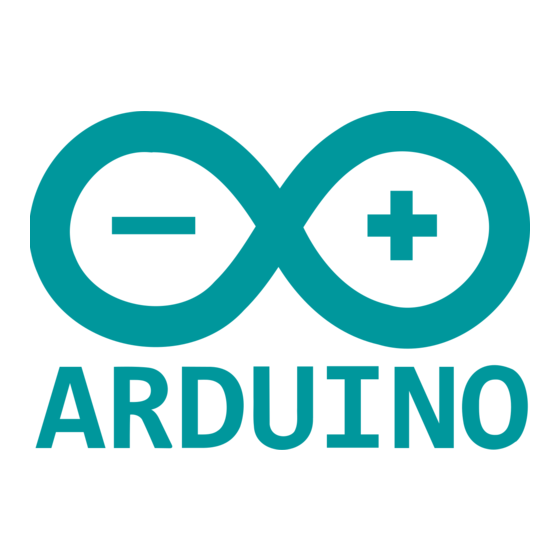
Advertisement
Table of Contents
Arduino MKR NB 1500
SKU MKRNB1500WANT
Barcode ABX00019
Implement inexpensive, large-coverage solutions over Narrowband IoT.
Overview
Add Narrowband communication to your project with the MKR NB 1500. It's the
perfect choice for devices in remote locations without an Internet connection, or in
situations in which power isn't available like on-field deployments, remote metering
systems, solar-powered devices, or other extreme scenarios.
The board's main processor is a low power Arm® Cortex®-M0 32-bit SAMD21, like in
the other boards within the Arduino MKR family. The Narrowband connectivity is
performed with a module from u-blox, the SARA-R410M-02B, a low power chipset
operating in the de different bands of the IoT LTE cellular range. On top of those,
secure communication is ensured through the Microchip® ECC508 crypto chip.
Besides that, the pcb includes a battery charger, and a connector for an external
antenna.
Advertisement
Table of Contents

Subscribe to Our Youtube Channel
Summary of Contents for Arduino MKR NB1500
- Page 1 The board's main processor is a low power Arm® Cortex®-M0 32-bit SAMD21, like in the other boards within the Arduino MKR family. The Narrowband connectivity is performed with a module from u-blox, the SARA-R410M-02B, a low power chipset operating in the de different bands of the IoT LTE cellular range.
-
Page 2: Battery Power
Li-Po battery while running on external power. Switching from one source to the other is done automatically. Related Boards If you are still deciding about the right wireless protocol for your solution, Arduino's MKR family has some alternatives to offer: MKR FOX 1200: for your EU solutions on Sigfox infrastructure. -
Page 3: Need Help
Arduino IoT Cloud Compatible Use your MKR board on Arduino's IoT Cloud, a simple and fast way to ensure secure communication for all of your connected Things. TRY THE ARDUINO IOT CLOUD FOR FREE *The MKR NB 1500 requires a SIM card to connect to the cloud, as it communicates over the mobile networks. - Page 4 The I2C port, also referred to as the Eslov self-identification port within Arduino, comes with: SDA, SCL, GND, +5V, and an extra digital pin meant to send an alarm to the otherwise plain I2C devices connected to it. The pinout is shown in the following...
- Page 5 If you are interested in designing your own modules for Arduino boards with this expansion port, the connector we suggest using is code: SHR-05V-S-B, also in the picture. FAQs Antenna When purchased at the Arduino Store, the MKR NB 1500 comes bundled with an antenna that can be attached to the board using the existing micro UFL connector.
- Page 6 Battery connector: The connector is of type JST S2B-PH-SM4-TB(LF)(SN). Mating connector is JST PHR-2. Vin: This pin can be used to power the board with a regulated 5V source. If the power is fed through this pin, the USB power source is disconnected. This is the only way you can supply 5V (respect this value) to the board not using USB.












Need help?
Do you have a question about the MKR NB1500 and is the answer not in the manual?
Questions and answers